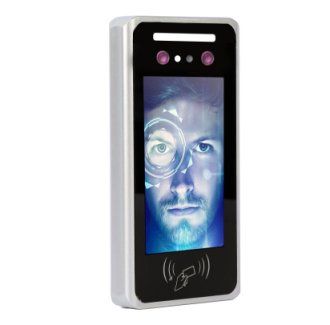Navigating Biometric Systems For Time Attendance And Access Control: Unveiling the Pros and Cons
If you’re looking to enhance the security of your company, biometrics systems can be a great investment. There are lots of options to choose from so it’s important to weigh up the pros and cons, in order to work out which system best suits your company’s needs. Let’s dissect the four main biometrics systems (facial, palm, fingerprint, and IRIS) in terms of accuracy, security, ease of use, contact vs. contactless operation, and cost.
1️⃣ Accuracy:
Facial Recognition: High accuracy, but can struggle with low-light conditions or altered appearances.
Palm Reader: Impressive accuracy, with potential difficulties with dirty or cold hands.
Fingerprint Scanner: Reliable but occasionally susceptible to false positives due to factors like moisture, dryness or damage due to working conditions.
IRIS Recognition: Robust accuracy, excelling in precise identification, but hindered by glasses or contact lenses.
2️⃣ Security:
Facial Recognition: Moderate security, ideal for time attendance and low security access control.
Palm Reader: High security, spoof-proof giving good protection ideal for time attendance and secure access control.
Fingerprint Scanner: Moderate security, ideal for time attendance and low security access control.
IRIS Recognition: High security, ideal for time attendance and secure access control.
3️⃣ Ease of Use:
Facial Recognition: Most user-friendly and non-intrusive, ensuring a seamless experience.
Palm Reader: Generally easy to use, with slightly longer initial setup and training times.
Fingerprint Scanner: Widely accepted for simplicity and quick authentication.
IRIS Recognition: Requires more effort during setup and enrollment and may be seen as intrusive by users.
4️⃣ Contact v Contactless:
Facial Recognition: Fully contactless, good for businesses prioritising hygiene and convenience.
Palm Reader: Typically contactless unless where a hand placement guide is required.
Fingerprint Scanner: Contact required, cleaning routine may be needed.
IRIS Recognition: Mostly contactless, aligning with hygiene-conscious environments.
5️⃣ Cost:
Facial Recognition: Generally cost-effective and budget-friendly.
Palm Reader: Mid-range cost, striking a balance between cost and security.
Fingerprint Scanner: Budget-friendly, delivering reliable performance without excessive costs.
IRIS Recognition: Higher cost, justified by increased security and accuracy where needed.
In the everchanging biometric landscape, understanding these nuances should help to guide you toward the technology that aligns with your specific needs. If you are interested in biometric systems and want to work out the best fit for your company, chat to a member of our team today!
☎ 01252 544457

